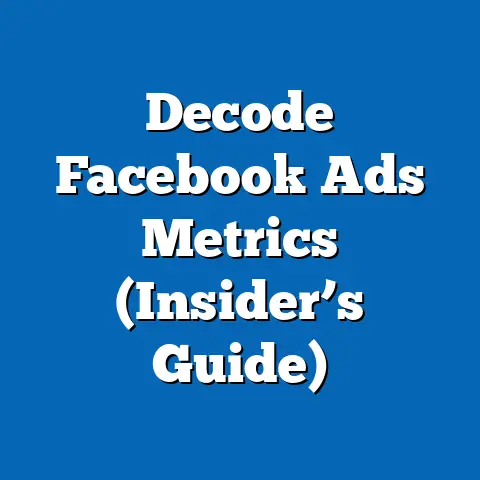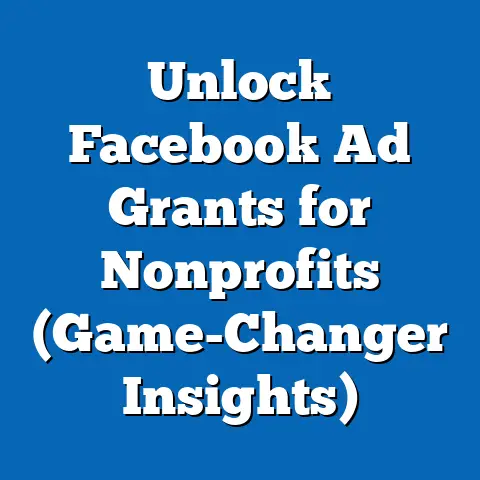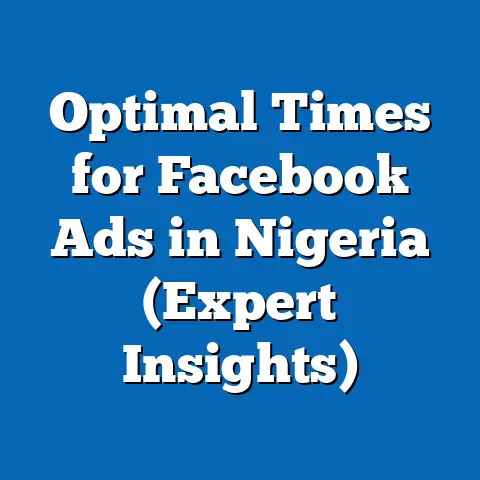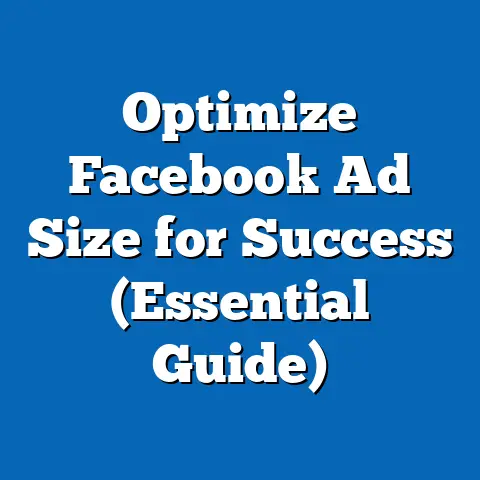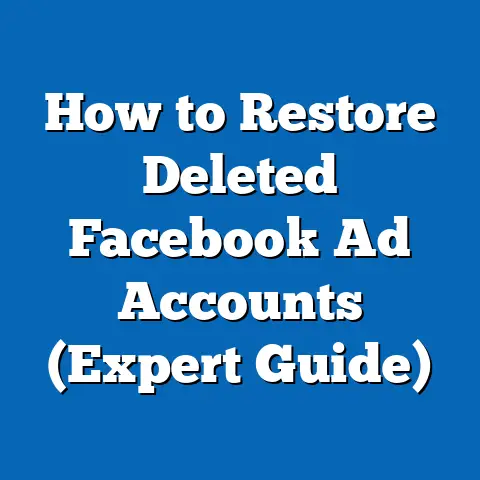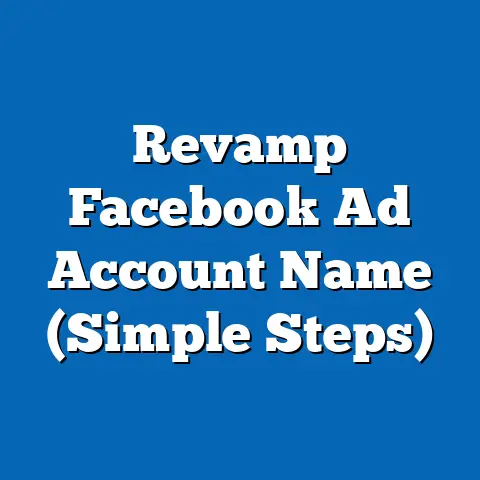Master 3×3 Facebook Ads (Proven Strategy for Success)
Ever scrolled through Facebook and felt like the ads were reading your mind? It’s almost like they know you’ve been eyeing that new gadget or dreaming of a tropical vacation. I often joke that Facebook is like a digital treasure hunt, but instead of gold, you find ads that are eerily tailored to your latest online searches. And let’s be honest, sometimes they’re so good, you actually want to click!
I remember a friend of mine, a small business owner, who spent countless hours crafting what she thought was the perfect Facebook ad. She poured her heart and soul into the visuals, the copy, everything. But when she launched the campaign, crickets. Turns out, she was targeting the wrong audience entirely! That’s when I realized the importance of a solid, strategic framework, and that’s where the 3×3 Facebook Ads strategy comes in.
In this article, I’m going to break down this powerful framework and show you how to use it to create Facebook ads that not only grab attention but also drive real results. We’ll cover everything from crafting compelling visuals and engaging copy to mastering the art of audience targeting and optimizing your campaigns for maximum ROI. So, buckle up, grab a cup of coffee (or two!), and let’s dive into the world of 3×3 Facebook Ads!
Understanding the 3×3 Framework
The 3×3 Facebook Ads framework is a simple yet effective way to structure your campaigns for success. It’s built on three key pillars, each with three essential components. Think of it as a recipe for Facebook ad success – you need the right ingredients in the right proportions to bake a delicious and profitable campaign.
Here’s the breakdown:
- Three Key Objectives: These are the goals you want to achieve with your Facebook ads.
- Three Essential Elements: These are the components that make your ads stand out and drive action.
- Three Targeting Strategies: These are the methods you use to reach the right audience with your ads.
Let’s take a closer look at each of these pillars.
Three Key Objectives
Before you even think about creating an ad, you need to define your objective. What do you want to achieve with your campaign? Are you trying to build brand awareness, generate leads, or drive sales? Your objective will influence everything from your targeting to your ad creative.
Here are three of the most common objectives:
- Brand Awareness: The goal here is to increase visibility and recognition of your brand. You want to get your name in front of as many potential customers as possible. This is often a good starting point for new businesses or when launching a new product. I’ve found that focusing on reach and frequency is key when aiming for brand awareness. Think about using visually appealing ads that showcase your brand’s personality and values.
- Lead Generation: This objective is focused on collecting contact information from potential customers. This could be through a lead form ad, a landing page on your website, or even a Messenger bot. Lead generation is great for businesses that sell high-value products or services that require a sales conversation. I’ve seen businesses successfully use lead generation ads to offer free consultations, ebooks, or webinars in exchange for contact information.
- Conversions: This is all about driving sales or other desired actions on your website or app. Conversions can include anything from purchasing a product to signing up for a subscription to filling out a contact form. This objective is best for businesses that have a well-optimized website and a clear sales funnel. I’ve found that using retargeting ads to reach people who have previously visited your website or added items to their cart can significantly boost conversion rates.
Takeaway: Define your objective before you start creating your ads. This will help you stay focused and ensure that your campaign is aligned with your overall business goals.
Three Essential Elements
Once you know your objective, you need to create ads that are compelling and effective. This means focusing on three essential elements:
- Compelling Visuals: In the crowded world of Facebook, your ads need to grab attention instantly. That means using high-quality, eye-catching images or videos that are relevant to your target audience. I’ve found that using visuals that evoke emotion or tell a story can be particularly effective. For example, a travel agency might use a stunning photo of a tropical beach to inspire wanderlust. Remember, visuals are the first thing people see, so make them count!
- Engaging Copy: Your ad copy should be clear, concise, and persuasive. It should highlight the benefits of your product or service and address the pain points of your target audience. I always recommend writing multiple versions of your ad copy and testing them to see which one performs best. Experiment with different headlines, body text, and call-to-actions. And don’t forget to use a tone that resonates with your target audience. Are they looking for something funny and lighthearted, or something more serious and professional?
- Clear Call-to-Action (CTA): Tell people what you want them to do! Your call-to-action should be clear, concise, and action-oriented. Use phrases like “Shop Now,” “Learn More,” “Sign Up,” or “Get Started.” I’ve found that using a button with a clear CTA can significantly increase click-through rates. Make sure your CTA is visually prominent and easy to click on mobile devices. Also, consider testing different CTAs to see which ones resonate best with your audience.
Takeaway: Focus on creating visually appealing ads with engaging copy and clear calls-to-action. These three elements are essential for capturing attention and driving results.
Three Targeting Strategies
Reaching the right audience is crucial for Facebook ad success. You can have the most beautiful ad in the world, but if you’re showing it to the wrong people, it’s not going to generate any results. That’s where targeting comes in.
Here are three effective targeting strategies:
- Demographics: This is the most basic form of targeting, but it can still be very effective. You can target people based on their age, gender, location, education, job title, and other demographic factors. I’ve found that this is a good starting point for many campaigns, especially when you have a clear idea of who your target customer is. For example, a clothing store might target women aged 25-45 who live in a specific city.
- Interests: This allows you to target people based on their interests, hobbies, and passions. Facebook gathers this information from the pages people like, the groups they join, and the topics they engage with. I’ve found that interest-based targeting can be very effective for reaching niche audiences. For example, a fitness company might target people who are interested in yoga, running, or healthy eating.
- Behaviors: This allows you to target people based on their online and offline behaviors, such as their purchase history, travel habits, and device usage. Facebook gathers this information from its own platform as well as from third-party data providers. I’ve found that behavior-based targeting can be very powerful for reaching people who are likely to be interested in your product or service. For example, a travel company might target people who have recently booked a flight or hotel.
Takeaway: Experiment with different targeting strategies to find the ones that work best for your business. Don’t be afraid to test different combinations of demographics, interests, and behaviors.
Crafting Compelling Ads
Now that you understand the 3×3 framework, let’s dive deeper into the art of crafting ads that convert. This is where your creativity and understanding of your target audience come into play.
Visuals: The First Impression
As I mentioned earlier, visuals are the first thing people see when they scroll through their Facebook feed. That’s why it’s so important to use high-quality, eye-catching images or videos that are relevant to your target audience.
Here are some tips for selecting visuals that resonate:
- Use High-Quality Images: Avoid blurry or pixelated images. Invest in professional photography or use stock photos from reputable sources.
- Choose Relevant Images: Make sure your images are relevant to your product or service and your target audience.
- Evoke Emotion: Use images that evoke emotion or tell a story. This will help you connect with your audience on a deeper level.
- Test Different Visuals: Experiment with different images and videos to see which ones perform best.
I remember working with a local restaurant that was struggling to attract new customers. Their Facebook ads featured generic photos of their food that didn’t really stand out. We decided to invest in professional food photography and create a short video showcasing the restaurant’s ambiance and friendly staff. The results were amazing! The new ads generated a significant increase in website traffic and reservations.
Copywriting: Words That Sell
Your ad copy should be clear, concise, and persuasive. It should highlight the benefits of your product or service and address the pain points of your target audience.
Here are some strategies for writing engaging copy:
- Start with a Strong Headline: Your headline is the first thing people will read, so make it count. Use a headline that is attention-grabbing and relevant to your target audience.
- Highlight the Benefits: Focus on the benefits of your product or service, not just the features. Tell people how your product or service will make their lives better.
- Address Pain Points: Acknowledge the pain points of your target audience and explain how your product or service can solve their problems.
- Use a Clear Call-to-Action: Tell people what you want them to do! Use a clear, concise, and action-oriented call-to-action.
- Keep it Concise: People have short attention spans, so keep your ad copy concise and to the point.
I once worked with an e-commerce store that was selling handmade jewelry. Their initial ad copy was very generic and didn’t really highlight the unique value proposition of their products. We rewrote the ad copy to focus on the craftsmanship, the unique designs, and the fact that each piece was made with love. We also included a story about the artisan who created the jewelry. The new ads generated a significant increase in sales.
Understanding the Audience: Know Your Customer
The key to crafting compelling ads is to understand your target audience. You need to know their demographics, interests, behaviors, and pain points. The more you know about your audience, the better you can tailor your ads to their preferences.
Here are some ways to research and understand your audience:
- Talk to Your Customers: The best way to understand your audience is to talk to them directly. Ask them about their challenges, their goals, and their preferences.
- Use Facebook Audience Insights: Facebook Audience Insights is a powerful tool that allows you to learn more about your target audience. You can use it to see their demographics, interests, behaviors, and page likes.
- Analyze Your Website Data: Use Google Analytics to analyze your website data and see who is visiting your website, where they are coming from, and what they are doing.
- Conduct Surveys: Conduct surveys to gather feedback from your target audience. Ask them about their needs, their preferences, and their opinions on your product or service.
Takeaway: Invest time in understanding your target audience. The more you know about them, the better you can tailor your ads to their preferences and pain points.
Effective Targeting Techniques
As I mentioned earlier, reaching the right audience is crucial for Facebook ad success. Let’s take a closer look at some effective targeting techniques.
Custom Audiences: Reach Your Existing Customers
Custom audiences allow you to target people who have already interacted with your business. This could be your existing customers, website visitors, or people who have engaged with your Facebook page.
Here are some ways to create custom audiences:
- Customer List: Upload a list of your customer email addresses or phone numbers. Facebook will match these to Facebook users and create a custom audience.
- Website Visitors: Install the Facebook Pixel on your website and create a custom audience of people who have visited specific pages on your website.
- Engagement on Facebook: Create a custom audience of people who have liked your Facebook page, engaged with your posts, or watched your videos.
I’ve found that custom audiences are particularly effective for retargeting. You can use them to reach people who have previously visited your website but haven’t made a purchase. For example, you could show them ads featuring the products they viewed or added to their cart.
Lookalike Audiences: Expand Your Reach
Lookalike audiences allow you to reach new people who are similar to your existing customers. Facebook will analyze your custom audience and find people who share similar demographics, interests, and behaviors.
Here’s how to create a lookalike audience:
- Create a Custom Audience: Start by creating a custom audience based on your existing customers, website visitors, or engagement on Facebook.
- Create a Lookalike Audience: Go to the Audiences section in Facebook Ads Manager and create a lookalike audience based on your custom audience.
- Choose Your Location: Select the location you want to target with your lookalike audience.
- Choose Your Audience Size: Select the size of your lookalike audience. A smaller audience will be more similar to your custom audience, while a larger audience will have a broader reach.
I’ve found that lookalike audiences are a great way to expand your reach and find new customers who are likely to be interested in your product or service.
Interest-Based Targeting: Reach Niche Audiences
Interest-based targeting allows you to reach people based on their interests, hobbies, and passions. Facebook gathers this information from the pages people like, the groups they join, and the topics they engage with.
Here are some tips for selecting interests that align with your brand:
- Think Like Your Customer: Put yourself in the shoes of your target customer and think about what they are interested in.
- Use Facebook Audience Insights: Use Facebook Audience Insights to see what interests your target audience has.
- Test Different Interests: Experiment with different interests to see which ones perform best.
I once worked with a local bookstore that was struggling to attract new customers. We used interest-based targeting to reach people who were interested in books, reading, and literature. We also targeted people who were interested in specific genres, such as mystery, romance, or science fiction. The ads generated a significant increase in foot traffic to the bookstore.
Takeaway: Use a combination of custom audiences, lookalike audiences, and interest-based targeting to reach the right audience with your ads.
Analyzing and Optimizing Ad Performance
Creating great ads and targeting the right audience is only half the battle. You also need to analyze your ad performance and make adjustments to improve your results over time.
Key Metrics: What to Watch
Here are some key metrics to monitor:
- Click-Through Rate (CTR): This is the percentage of people who see your ad and click on it. A high CTR indicates that your ad is relevant and engaging.
- Cost Per Click (CPC): This is the amount you pay each time someone clicks on your ad. A low CPC indicates that your ad is efficient.
- Conversion Rate: This is the percentage of people who click on your ad and then take a desired action, such as making a purchase or filling out a form. A high conversion rate indicates that your website is well-optimized.
- Cost Per Acquisition (CPA): This is the amount you pay for each conversion. A low CPA indicates that your campaign is profitable.
- Return on Ad Spend (ROAS): This is the amount of revenue you generate for every dollar you spend on advertising. A high ROAS indicates that your campaign is generating a good return on investment.
I always recommend tracking these metrics on a regular basis. This will help you identify which ads are performing well and which ones need improvement.
A/B Testing: Find What Works
A/B testing, also known as split testing, is a powerful technique for optimizing your Facebook ads. It involves creating two or more versions of an ad and testing them against each other to see which one performs best.
Here are some elements you can A/B test:
- Headlines: Test different headlines to see which ones are most attention-grabbing.
- Body Text: Test different body text to see which one is most persuasive.
- Visuals: Test different images and videos to see which ones resonate best with your audience.
- Call-to-Actions: Test different call-to-actions to see which ones drive the most clicks.
- Targeting: Test different targeting options to see which ones reach the most qualified audience.
I’ve found that A/B testing is a great way to improve your ad performance over time. By constantly testing different elements, you can identify what works best for your audience and optimize your campaigns for maximum ROI.
Making Adjustments: Iterate and Improve
Based on your analytics and A/B testing results, you need to make adjustments to your campaigns to improve your performance.
Here are some adjustments you can make:
- Pause Underperforming Ads: If an ad is not performing well, pause it and focus on the ads that are generating results.
- Adjust Your Targeting: If you’re not reaching the right audience, adjust your targeting options.
- Update Your Ad Copy: If your ad copy is not engaging, update it with new headlines, body text, or call-to-actions.
- Change Your Visuals: If your visuals are not eye-catching, change them with new images or videos.
- Increase Your Budget: If your campaign is performing well, consider increasing your budget to reach a larger audience.
I always tell my clients that Facebook advertising is an ongoing process. It’s not something you can set up once and forget about. You need to constantly monitor your performance, test different elements, and make adjustments to improve your results over time.
Takeaway: Analyze your ad performance, conduct A/B tests, and make adjustments to your campaigns to improve your results over time.
Real-Life Success Stories
Let’s take a look at some real-life success stories of brands that have effectively implemented the 3×3 Facebook Ads strategy.
- Example 1: A Local Coffee Shop: A local coffee shop used Facebook ads to increase brand awareness and drive foot traffic to their store. They created visually appealing ads featuring photos of their coffee and pastries. They targeted people who were interested in coffee, tea, and local businesses. They also ran a contest where people could win a free coffee by liking their Facebook page. The campaign generated a significant increase in foot traffic and sales.
- Example 2: An E-Commerce Store: An e-commerce store used Facebook ads to generate leads and drive sales. They created lead form ads offering a discount code in exchange for contact information. They targeted people who were interested in their products and had previously visited their website. They also used retargeting ads to reach people who had added items to their cart but hadn’t completed their purchase. The campaign generated a significant increase in leads and sales.
- Example 3: A Software Company: A software company used Facebook ads to drive conversions and increase their customer base. They created ads featuring testimonials from satisfied customers. They targeted people who were interested in their software and had previously visited their website. They also used lookalike audiences to reach new people who were similar to their existing customers. The campaign generated a significant increase in conversions and revenue.
These are just a few examples of how businesses have successfully used the 3×3 Facebook Ads strategy to achieve their goals.
Conclusion
The 3×3 Facebook Ads framework is a simple yet powerful way to structure your campaigns for success. By focusing on your objectives, essential elements, and targeting strategies, you can create ads that capture attention, engage your audience, and drive real results.
Remember, Facebook advertising is an ongoing process. You need to constantly monitor your performance, test different elements, and make adjustments to improve your results over time.
So, go out there and start crafting your own 3×3 Facebook Ads! And remember, the only thing better than crafting the perfect Facebook ad is sitting back and watching the sales roll in – preferably while sipping a nice cup of coffee (or two!). Good luck!

